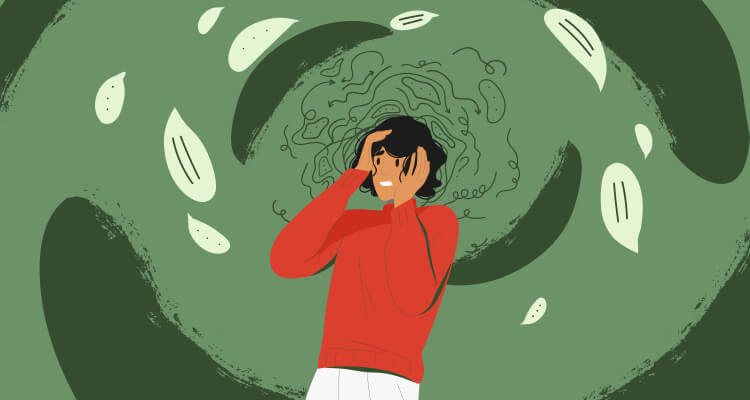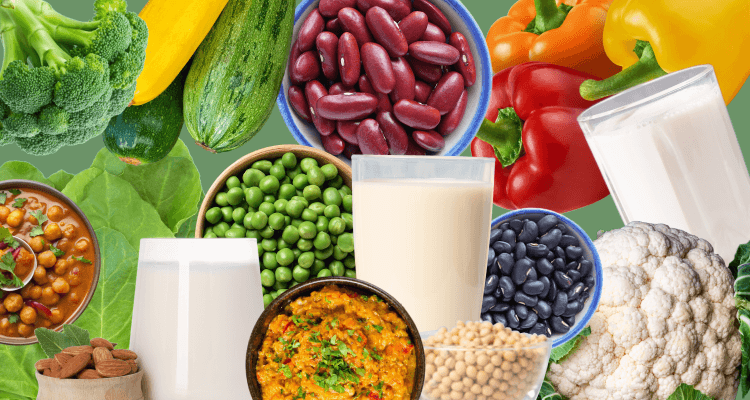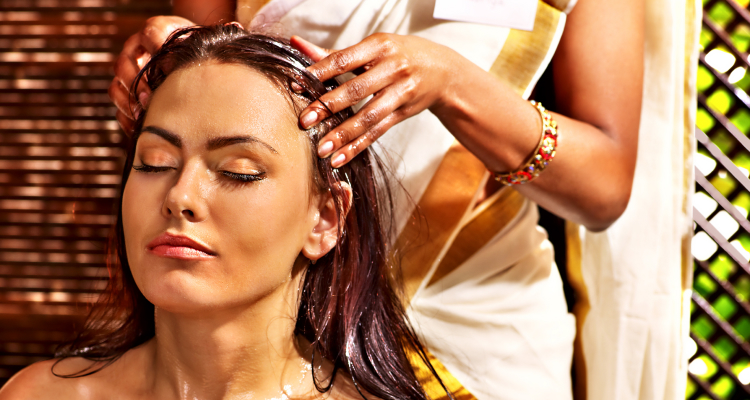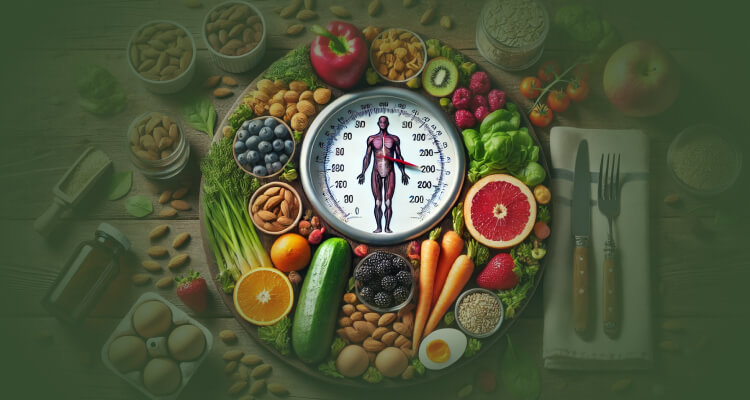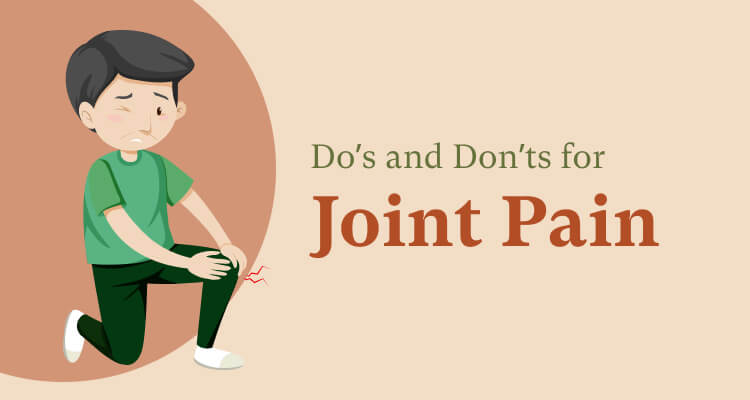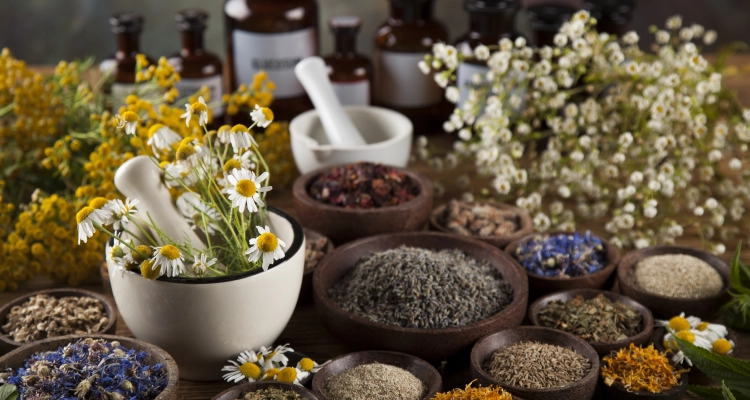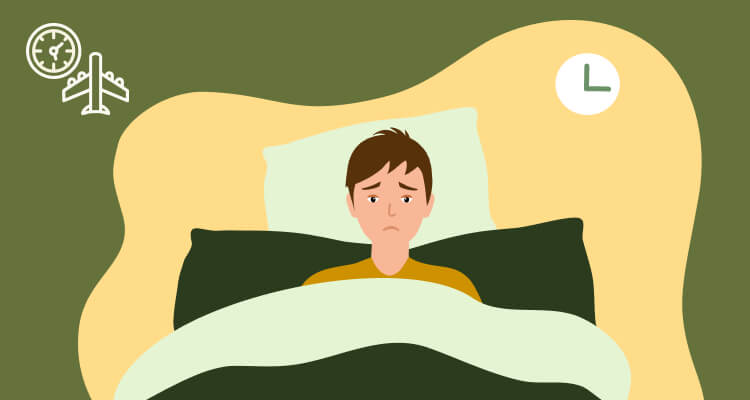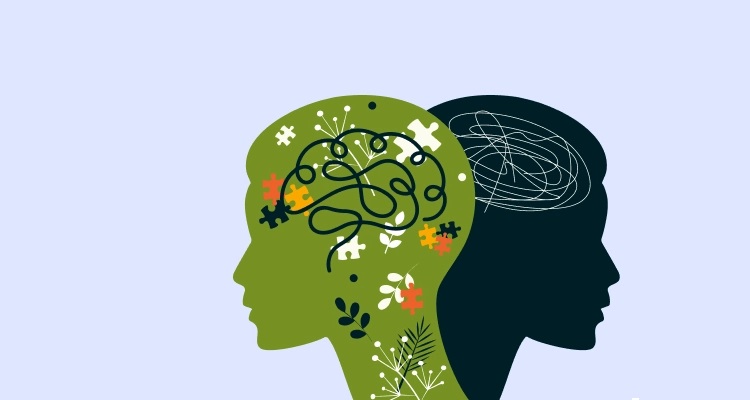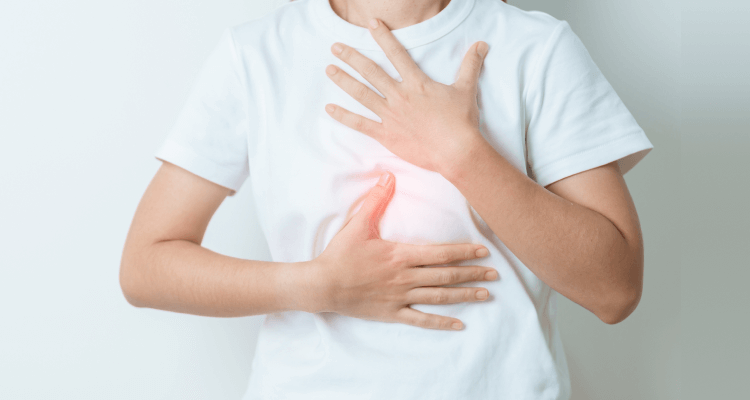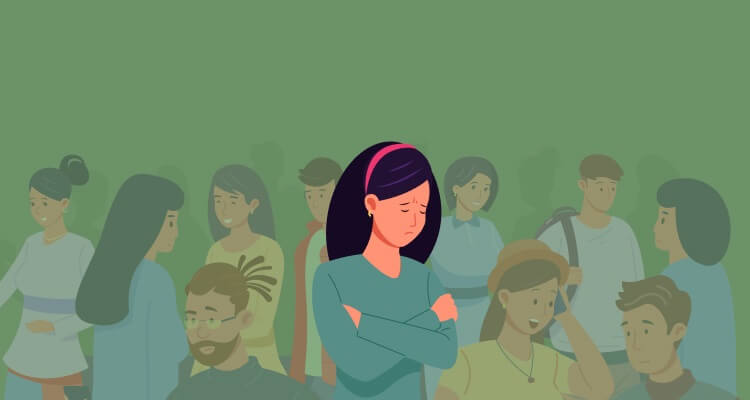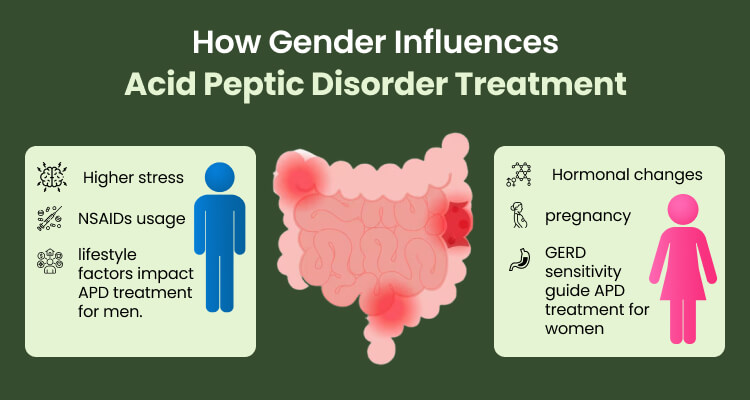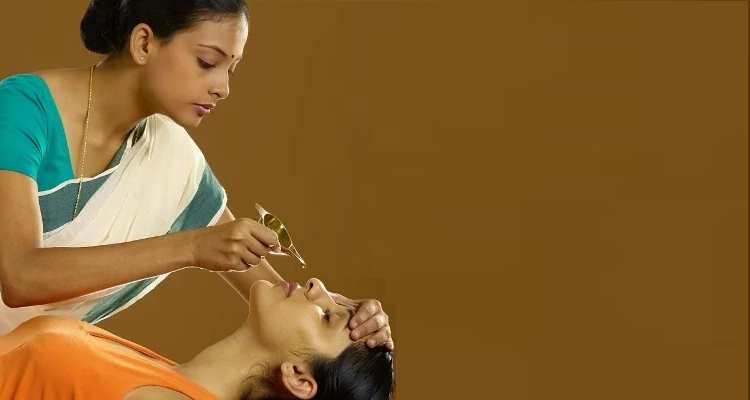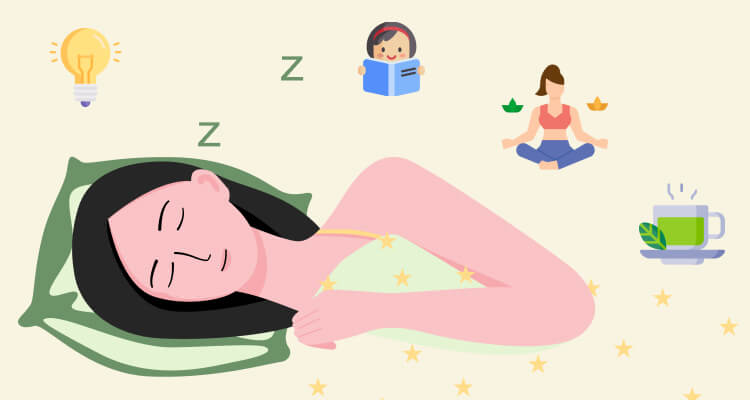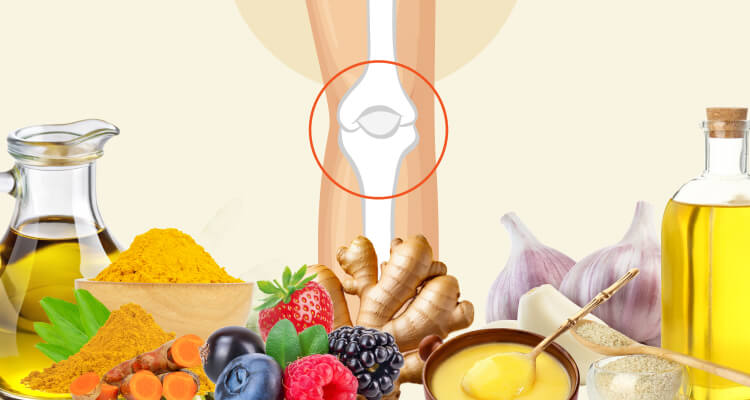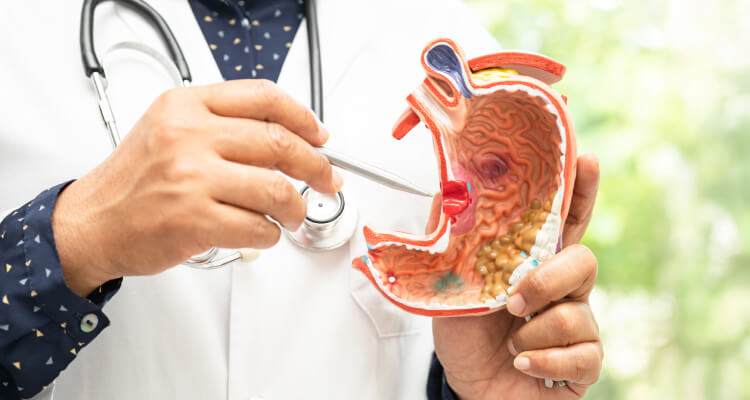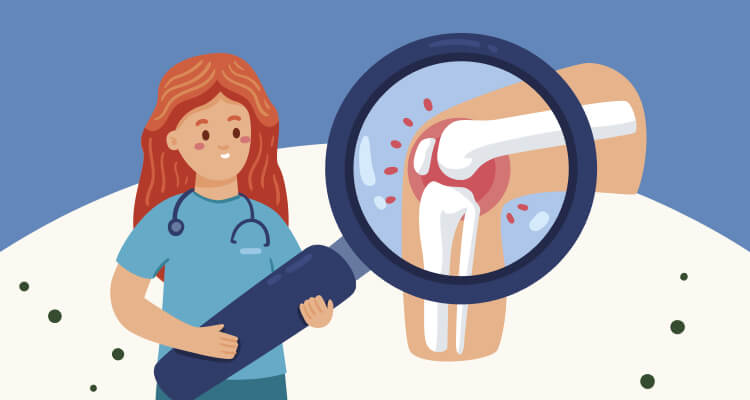What You’ll Learn:
- Not all headaches are the same—did you know there are over 150 different types?
- Stress isn’t the only culprit—diet, hormones, and even weather changes can trigger a headache.
- A dark room might not be your solution—some people find fresh air or light movement helps more.
- Frequent headaches aren’t “normal”—they might be your body signaling an imbalance or dehydration.
- Children can get migraines too—and their symptoms might look completely different than yours.
- Caffeine doesn’t always make things worse
- Not every headache comes from a Vata imbalance
- Painkillers aren’t the quick fix.
- Brain tumors aren’t the usual cause
- Chocolate isn’t always the enemy
- Headaches aren’t all in your head
- Migraines are more than just pain
- Fasting isn’t the magic cure
Headaches—almost everyone has experienced one, but not everyone understands them. From mild discomfort to throbbing pain, headaches can feel like a mystery. With so many myths out there, it’s easy to get lost in confusion about what causes them and how to treat them.
We’re tackling 13 common headache myths, revealing the truth behind each one, and sharing practical tips—backed by modern science and Ayurvedic wisdom—to help you find real relief.
Ready to get to the bottom of your headaches? Let’s dive in.
Myth #1: All headaches are the same.
- Reality: This couldn’t be further from the truth. There are over 150 types of headaches, but the most common ones you might experience are:
- Tension Headache: A dull, tight, or pressure-like pain, like a band squeezing your head—usually linked to stress or poor posture.
- Migraine: Pulsating pain, often on one side of the head, with nausea and sensitivity to light or sound.
- Sinus Headache: Deep pain around the forehead, cheeks, or nose, often accompanied by a stuffy nose or pressure when bending forward.
- Cluster Headache: Intense, stabbing pain around one eye, occurring in cycles or “clusters” over weeks or months.
- Gut-Related Headache: Linked to digestion issues, often with bloating, acidity, or discomfort after meals.
How to Know Which Headache You Have:
Track the pain pattern, note accompanying symptoms (like nausea or congestion), keep a trigger diary, and consult a healthcare professional to identify your headache type.
Myth #2: Stress is the only cause of headaches.
- Reality: Stress often gets the blame, but headaches have many triggers:
- Dietary choices: Skipping meals, dehydration, or certain foods (like aged cheese or processed meats) can set off headaches.
- Hormonal changes: Ever noticed headaches around your period or during menopause? Hormone fluctuations are a major factor.
- Environmental factors: Bright lights, loud noises, or even changes in weather can trigger headaches.
- Sleep issues: Poor sleep hygiene or irregular patterns are common culprits.
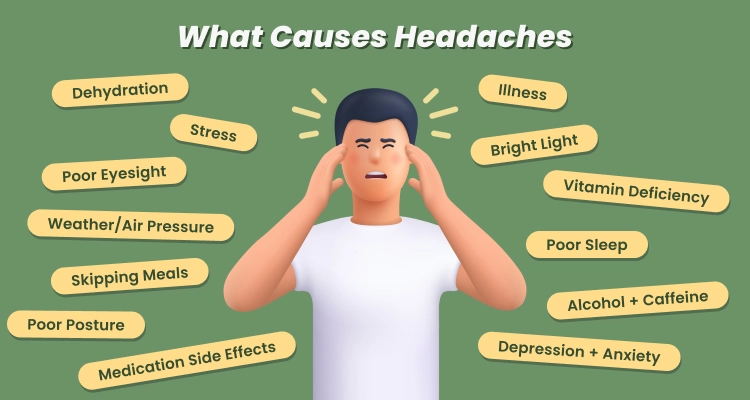
What Ayurveda Says:
From an Ayurvedic perspective, stress is just one factor. Poor digestion (agni), toxin build-up (ama), or imbalances in the doshas can also lead to headaches. Treating the root cause—be it dietary, lifestyle, or emotional—is key.
Myth #3: You need to lie down in a dark room to relieve a headache.
-
- Reality: While a dark, quiet room is a haven for many migraine sufferers, it’s not a one-size-fits-all solution. Some people find relief through movement—like a light walk in fresh air—or even engaging in mindfulness practices like meditation.
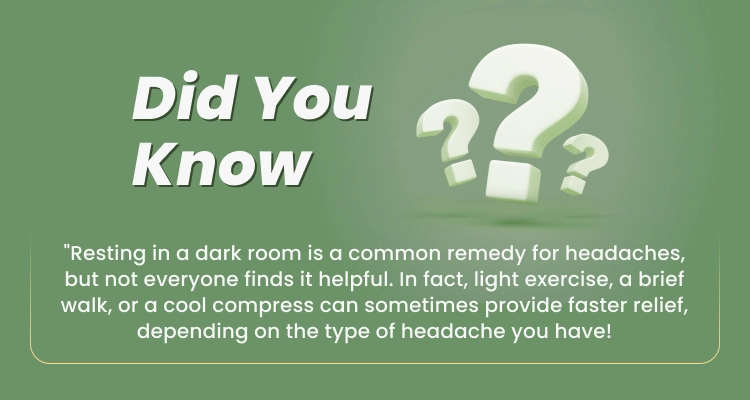
What You Can Try?
- Gentle stretching or breathing exercises (Pranayama), particularly Alternative Nostril Breathing and Bee Breath (Bhramari), can be incredibly beneficial for almost all types of headaches, including tension headaches, migraines, sinus headaches, and headaches due to hormonal fluctuations.
- Moreover, you can try Left Nostril Breathing, Cooling Breath (Sitali), and Hissing Breath (Sheetkari). These practices are especially helpful for headaches caused by hyperacidity, hypertension, or conditions of hyperactive/elevated Pitta dosha.
- For migraines, consider applying cooling herbal oils such as Brahmi or peppermint, diluted with coconut oil, to your temples.
- For Sinus headaches, ayurvedic therapies like Nasya (medicated oil application through the nostrils) can clear head congestion.
The key is experimenting with what works for your body and type of headache. Always consult an Ayurvedic practitioner before you try something new.
Myth #4: Headaches are just a normal part of life.
Reality: Occasional headaches are common, but frequent or severe ones aren’t something you should ignore. They’re often a sign that something in your body or lifestyle needs attention.
Why It Matters:
Frequent headaches could signal dehydration, nutrient deficiencies, or hormonal imbalances. Severe, sudden-onset headaches might require immediate medical attention.
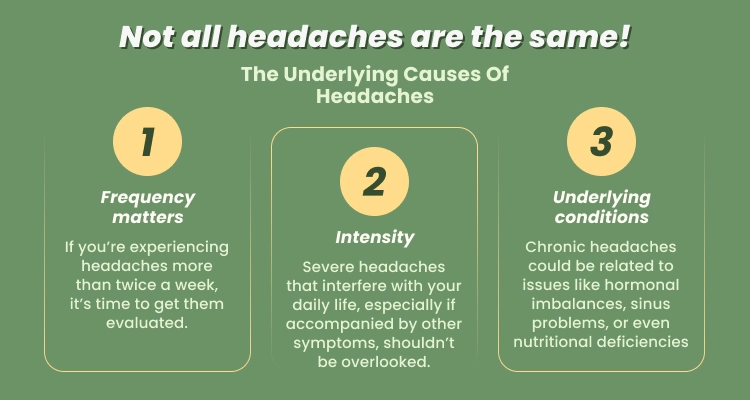
What Ayurveda Says:
Ayurveda emphasizes prevention. If you experience frequent headaches, look at your daily routines. Are you skipping meals? Eating incompatible foods? Are your sleep patterns irregular? A well-balanced lifestyle that supports your bio-energies (doshas) can drastically reduce headaches over time.
Myth #5: Only adults get migraines.
Reality: Migraines don’t discriminate by age. In children, migraines are more common in girls than boys. The frequency of migraines rises during puberty, reaches its peak between ages 35 and 39, and generally declines later in life, especially after menopause.
Children can—and do—experience migraines, though their symptoms often differ from adults. Instead of intense head pain, kids might feel stomachaches, dizziness, or fatigue.
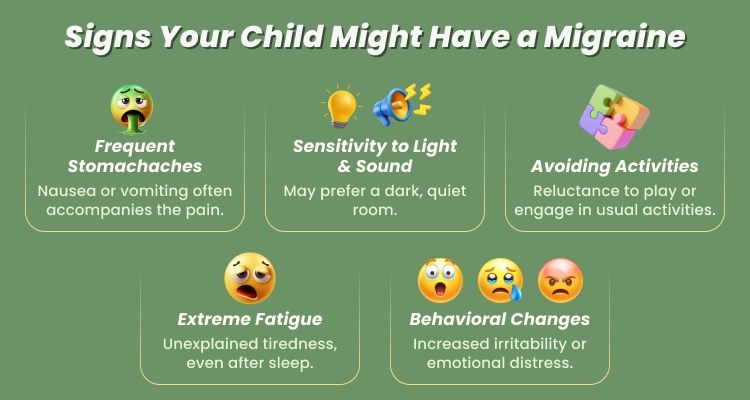
Parent Tip:
If your child often says they’re too tired, feel nauseous, or dislike bright lights, consult a healthcare provider. Simple, natural remedies like chamomile tea or calming routines can help, along with professional advice.
Myth #6: Caffeine always makes headaches worse.
Reality: While it’s true that too much caffeine can worsen headaches or lead to dependency, in moderation, caffeine can actually help relieve some types of headaches. It’s often found in over-the-counter headache medications.
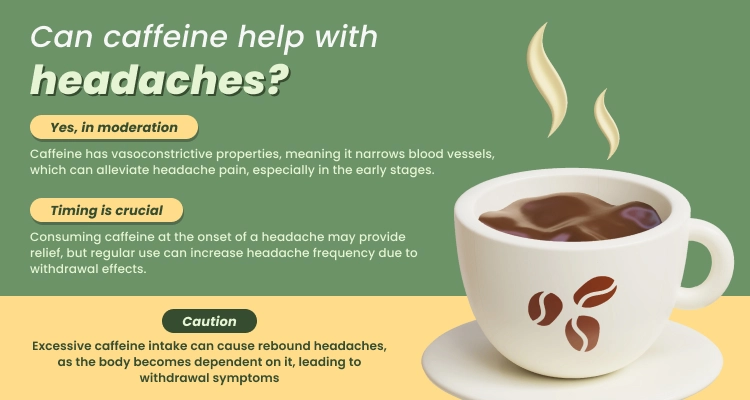
The Takeaway:
Excess caffeine can trigger or worsen headaches, but in controlled amounts, especially in medications, it can offer relief. Rather than using caffeine in excess, focus on balancing your dosha with soothing herbs and practices that help calm the mind and body without overstimulating the nervous system.
Myth #7: All headaches are caused by Vata imbalance.
In Ayurveda, headaches are often thought to stem from imbalances in the body’s doshas (Vata, Pitta, and Kapha). While a Vata imbalance (which represents air and space in the body) is commonly associated with headaches, not all headaches are caused by this. Pitta imbalances (fire and water) can lead to headaches with a burning sensation, often accompanied by irritability or anger. Kapha imbalances (earth and water) may cause dull, heavy headaches related to sinus issues or mucus build-up.
Each headache type has its own distinct cause. For example, stress and digestive issues can aggravate Pitta, while Kapha imbalances often show up during cold, damp seasons or in people with slower metabolism.
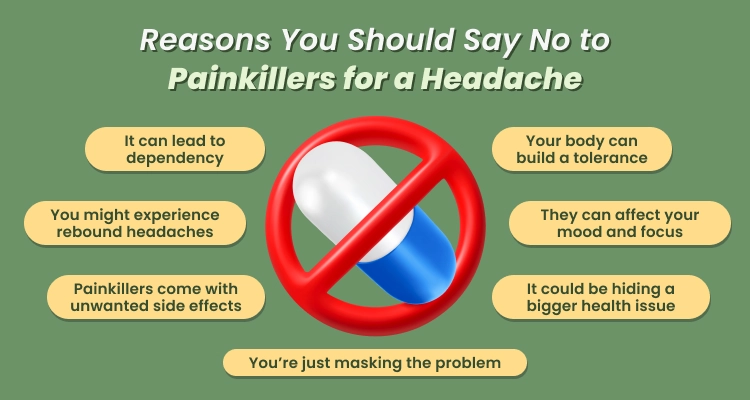
What Ayurveda Says:
To balance doshas, Ayurveda suggests focusing on daily routines. If you’re dealing with Vata-related headaches, try incorporating grounding, warming foods, and routines. If it’s a Pitta issue, cooling foods like cucumbers and mint can help calm the fiery symptoms. For Kapha headaches, stimulating activities like exercise or dry brushing can bring relief.
Myth #8: You should always take painkillers at the first sign of a headache.
Reality: While it’s easy to reach for pain medication as soon as a headache strikes, overuse can actually make things worse, leading to rebound headaches. It happens when the medication itself triggers more headaches.
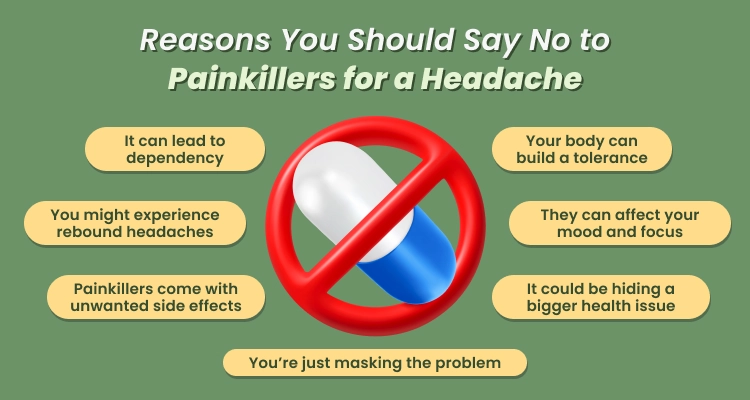
Ayurvedic Tip:
Instead of immediately turning to painkillers, try using natural remedies like a sesame oil massage on the temples or practicing deep, mindful breathing to relax your nervous system. Ayurveda suggests a more holistic approach: hydrate with warm water or herbal teas like ginger or peppermint, apply a cold compress, and practice calming breathing exercises to balance your doshas.
Myth #9:Brain tumors commonly cause headaches.
Reality: While headaches can be a symptom of a brain tumor, they are rarely the cause. Most headaches are due to benign conditions such as tension, migraines, or sinus issues. Brain tumors tend to cause headaches that are more persistent and severe; often accompanied by other symptoms like nausea, changes in vision, or neurological changes.
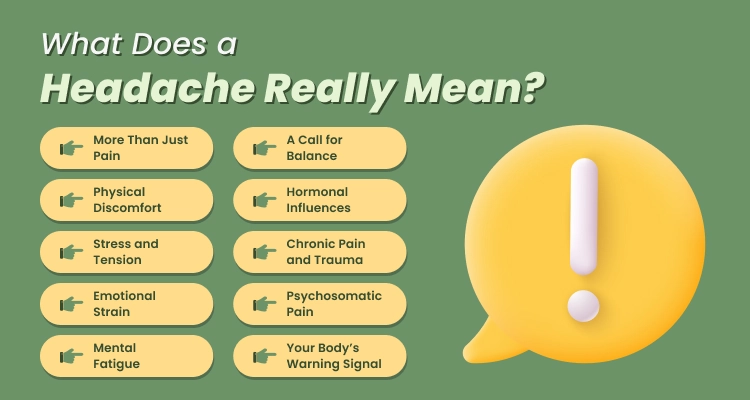
When to Worry:
Seek medical help if your headaches are sudden or accompanied by symptoms like blurry vision, difficulty speaking, or vomiting.
Myth #10: Eating chocolate always triggers migraines.
Many people assume chocolate is a definite migraine trigger, but that’s not always the case. While chocolate can trigger migraines in some—especially those sensitive to caffeine or tyramine—it doesn’t affect everyone in the same way. For many, chocolate can be enjoyed without issue, and other factors like stress, lack of sleep, or hormonal changes are often the real triggers.
Not everyone identifies chocolate as a migraine trigger, and some even find that dark chocolate helps them. Each individual is unique, and this depends on their Prakruti. Figure out how chocolate works for you. If it helps, remember to eat it in moderation, not merely to satisfy a craving. If it is a trigger, note it down along with other food triggers and consciously avoid it to better manage your migraine episodes.
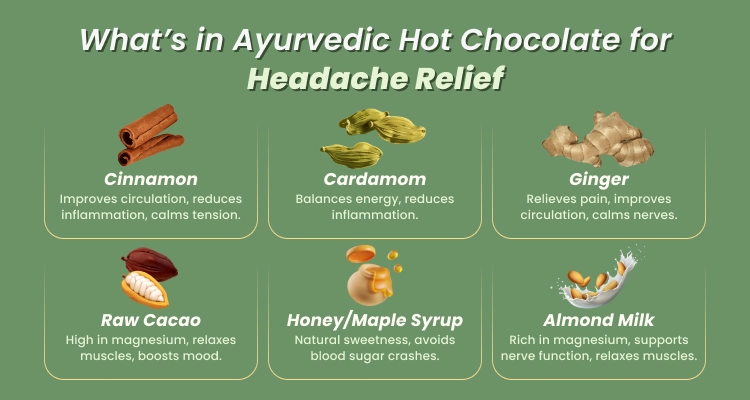
If it doesn’t trigger your headache, you can enjoy an Ayurveda-inspired hot chocolate, which offers a soothing twist to winter. Adding warming spices like cinnamon, cardamom, and ginger can improve digestion, boost circulation, and calm your nervous system. These spices have anti-inflammatory properties, support healthy metabolism, and can help balance the body’s energies, particularly during colder months or times of stress. So, if you’re craving chocolate, this Ayurvedic version can offer both comfort and health benefits.
Myth #11: Headaches are all in your head (psychologically).
Reality: It’s a common misconception that headaches are merely a psychological issue, but they are far more complex than that. While stress and emotional factors can trigger or exacerbate headaches, they are not simply “all in your head.” In fact, headaches are physical conditions with complex causes, such as changes in blood flow, muscle tension, nerve sensitivity, or chemical imbalances.
Tension headaches, migraines, and cluster headaches all have physical origins, influenced by factors like dehydration, diet, sleep, and stress. For example, tension headaches often occur due to tight muscles in the neck and shoulders, while migraines involve changes in the brain’s vascular system.

What Helps:
- Neck and shoulder stretches or mindful yoga postures help release tension throughout the body and along the spine, reducing pain and mental strain. Daily poses like Cobra pose, seated forward bends, Downward Dog and spinal twists can alleviate tight muscles, release tension, and reduce chronic headaches.
- Head massage with essential oils can ease migraines, while deep breathing and reducing screen time help calm the nervous system and prevent future headaches.
Myth #12: Migraine attacks are just really bad headaches.
Reality: Many people think a migraine is simply a bad headache, but in reality, it’s much more complex. Migraines are a neurological condition, not just a painful headache. Along with the intense pain, migraines can cause symptoms like nausea, sensitivity to light or sound, and even dizziness. Some people experience silent migraines, where they feel all the associated symptoms—like nausea or light sensitivity—without the headache itself.
What makes migraines different is their impact on the whole body, not just the head. They can last anywhere from a few hours to several days and often come with additional symptoms that are far beyond just pain.

Ayurvedic View:
Migraines often stem from Pitta imbalances. Cooling remedies like coconut water, aloe vera juice, or coriander tea can provide relief.
Myth #13: Fasting cures chronic headaches.
Fasting is often seen as a quick fix for many health issues, but it’s not the ultimate cure for chronic headaches. While some may feel temporary relief, fasting can actually trigger headaches in certain individuals due to drops in blood sugar or dehydration. Everyone’s body reacts differently, and fasting may not address the root cause of chronic headaches.
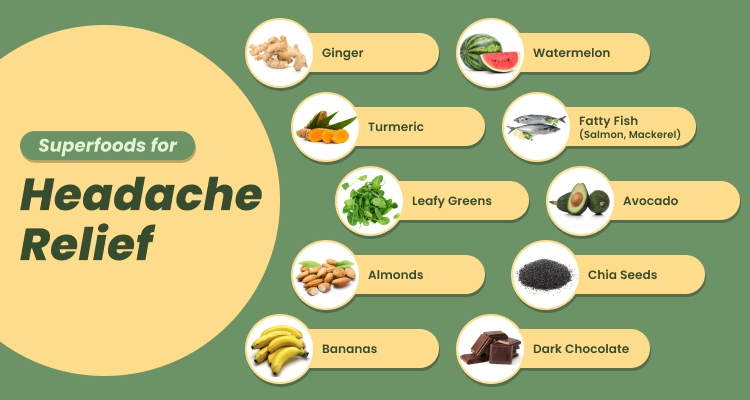
What Helps:
- Instead of fasting, have a balanced diet with regular meals rich in whole foods and nutrients that stabilize blood sugar levels. If you’re prone to headaches, consider incorporating foods with anti-inflammatory properties, such as turmeric, ginger, and leafy greens, into your diet.
- Taking time to sit or walk on the earth every day can bring relief. A headache might be your mind and body’s way of asking you to slow down and tune in. Sitting in silent meditation daily for just 5 to 11 minutes can make a big difference. Embracing stillness can ease pain and reduce inflammation, helping you feel more in tune with yourself.
Ready to manage it?
Headaches are more than just an occasional inconvenience; they’re your body’s way of signaling that something is off. By debunking common myths and understanding the real causes of headaches, you can take proactive steps to find effective and lasting relief. Whether through lifestyle changes, targeted therapies, or holistic practices, knowing the root cause of your headaches is crucial to effective treatment. Don’t let myths steer you wrong—take control and make informed choices to manage your headache health.
At Live Your Best Life, we’re committed to providing you with the knowledge, resources, and natural solutions to help you live without the burden of headaches. Our holistic approach combines time-tested remedies with modern wellness practices, guiding you toward a balanced and pain-free life. Explore our tools, tips, and products for a healthier, more comfortable you.


